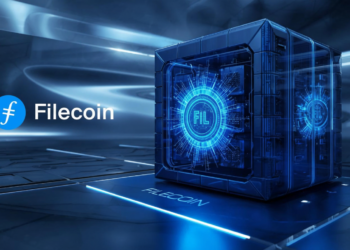The internet is changing, and with it comes a new way of thinking about how we connect, share, and own our digital lives. Web3 is more than just a buzzword; it’s a movement toward a decentralized version of the internet that puts power back in the hands of the users. Exploring this journey can be exciting and fulfilling.
The Allure of Decentralization: Why Web3 Matters
Decentralization means that no single authority or entity controls the entire network. This holds great promise for individuals seeking ownership over their data and digital experiences. Unlike Web2, where large companies dominate, Web3 encourages participation and innovation directly from its users.
Understanding the Shift from Web2 to Web3: Key Differences
So, what’s the difference between Web2 and Web3? Here are some pivotal aspects:
- Ownership: In Web2, platforms own user data. In Web3, users control their own data.
- Monetization: Businesses profit from user data in Web2. Web3 shifts the economic model to enable users to earn from their contributions.
- Interactivity: Web2 is about user-generated content, while Web3 enables a more interactive, peer-to-peer experience.
What to Expect in this Guide: A Roadmap to Web3 Understanding
This guide serves as your roadmap to Web3, providing essential insights into its foundational technologies, key applications, and how to engage with this new digital frontier.
Understanding the Fundamentals of Web3
Blockchain Technology Explained: The Foundation of Web3
Blockchain is the backbone of Web3. This technology creates a transparent and secure record of transactions.
Types of Blockchains: Public, Private, and Consortium
- Public Blockchains: Open for everyone, examples include Bitcoin and Ethereum.
- Private Blockchains: Restricted access, often used by businesses for internal operations.
- Consortium Blockchains: Controlled by a group of organizations, providing benefits of both public and private blockchains.
How Blockchain Ensures Security and Transparency
Blockchain records data in blocks, and these blocks are linked together, making them immutable. Once a block is added, altering it becomes virtually impossible, ensuring both security and transparency.
Cryptocurrencies and Digital Assets: Fueling the Web3 Economy
Cryptocurrencies are digital currencies that exist on blockchain networks, fueling activities within Web3.
Popular Cryptocurrencies and Their Use Cases
- Bitcoin: Digital gold, a store of value.
- Ethereum: A platform for creating smart contracts and dApps.
- Ripple: Facilitates fast cross-border payments.
Understanding NFTs and Their Role in Web3
Non-fungible tokens (NFTs) are unique digital assets. They can represent artwork, music, or even virtual real estate. NFTs empower artists and creators to own and monetize their work directly.
Exploring Key Web3 Technologies
Decentralized Applications (dApps): The Power of Peer-to-Peer
Decentralized applications run on the blockchain, allowing users to connect without intermediaries.
Examples of Popular dApps and Their Functionality
- Uniswap: A decentralized exchange for trading cryptocurrencies.
- OpenSea: A marketplace for buying and selling NFTs.
The Advantages of dApps Over Traditional Applications
- No Central Authority: Users have complete control.
- Transparency: All transactions are visible on the blockchain.
Decentralized Finance (DeFi): Reimagining Financial Services
DeFi is transforming how we think about finance. It eliminates intermediaries, lowering costs and increasing accessibility.
DeFi Lending and Borrowing Platforms: A New Paradigm
Platforms like Aave and Compound allow users to lend and borrow without a bank. Users earn interest on their deposited assets, while borrowers can secure loans quickly.
DeFi’s Impact on Traditional Finance
DeFi challenges the traditional banking system by providing equal access to financial services for everyone, regardless of their location or background.
Navigating the Web3 Landscape: Practical Steps
Setting up a Crypto Wallet: Your Gateway to Web3
A crypto wallet is essential for interacting with Web3. It stores your cryptocurrencies and allows you to access dApps.
Choosing the Right Wallet Based on Your Needs
- Software Wallets: Easy to use, perfect for beginners (e.g., MetaMask).
- Hardware Wallets: More secure, designed for long-term storage (e.g., Ledger).
Securing Your Wallet: Best Practices for Safeguarding Assets
- Use strong, unique passwords.
- Enable two-factor authentication.
Interacting with dApps and DeFi Platforms: A Hands-On Guide
Using dApps can be straightforward with the right guidance.
Step-by-Step Instructions for Using a Popular dApp
- Set up a wallet.
- Fund your wallet with cryptocurrency.
- Connect your wallet to the dApp.
Understanding Gas Fees and Transaction Costs
Gas fees are the costs to perform transactions on a blockchain. They vary based on network congestion. Always check fees before proceeding with a transaction.
The Societal Impact of Web3
Web3’s Potential to Empower Users: Data Ownership and Privacy
Web3 fundamentally changes how we think about privacy and data ownership. With decentralized identity management, users can control who accesses their information.
The Importance of Decentralized Identity Management
This approach allows individuals to own their digital identities, reducing the risk of identity theft and data breaches.
Web3 and the Fight Against Censorship
Decentralized networks promote freedom of speech by reducing control from central authorities. This could be vital in countries with strict censorship.
Addressing the Challenges of Web3: Scalability and Regulation
Web3 is not without its challenges. Scalability issues can hinder user experience, especially during peak times.
Current Challenges in Web3 Adoption and Development
Developers are continually working on solutions to enhance transaction speeds and lower costs.
The Role of Regulation in Shaping the Web3 Future
Regulations can provide clarity and protection for users, but they could also stifle innovation. Striking a balance is crucial for the industry’s growth.
Conclusion: Embracing the Future of the Internet
Key Takeaways: A Summary of Web3’s Core Concepts
- Web3 empowers users through decentralization and control over data.
- Blockchain technology provides transparency and security.
- DeFi and dApps offer practical financial solutions.
Future Trends and Predictions in the Web3 Space
As technology advances, more industries will adopt Web3 principles. Innovations in AI and machine learning may integrate with Web3, further enhancing capabilities.
Actionable Steps for Beginners: Getting Started with Web3
- Educate yourself about blockchain and cryptocurrencies.
- Set up a wallet and engage with dApps.
- Stay informed about developments in the Web3 space.
Embrace the journey into Web3 and be part of the future of the internet. Your adventure starts now.
Join Us : Twitter | Website | GitHub | Telegram | Facebook | YouTube

























